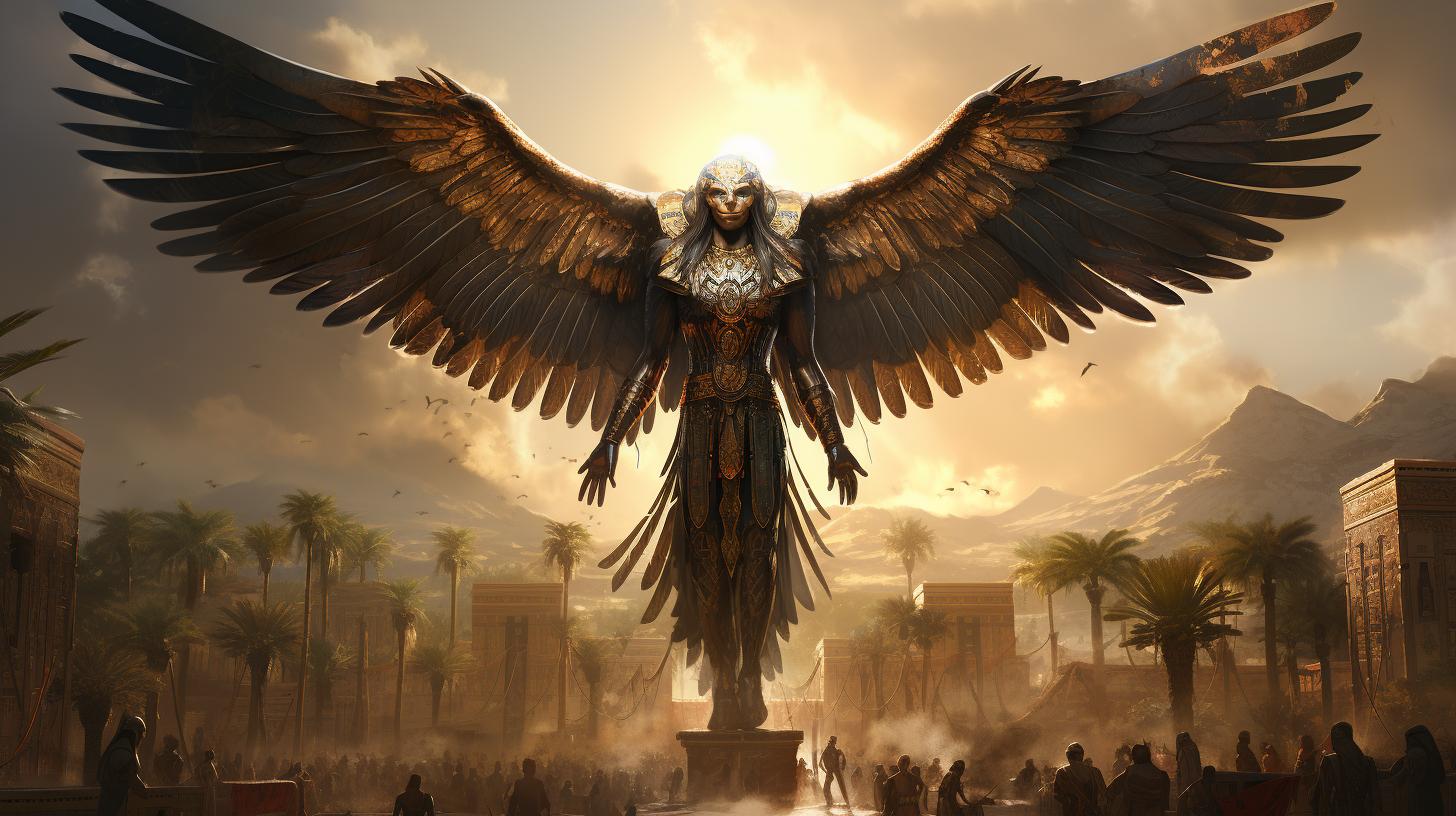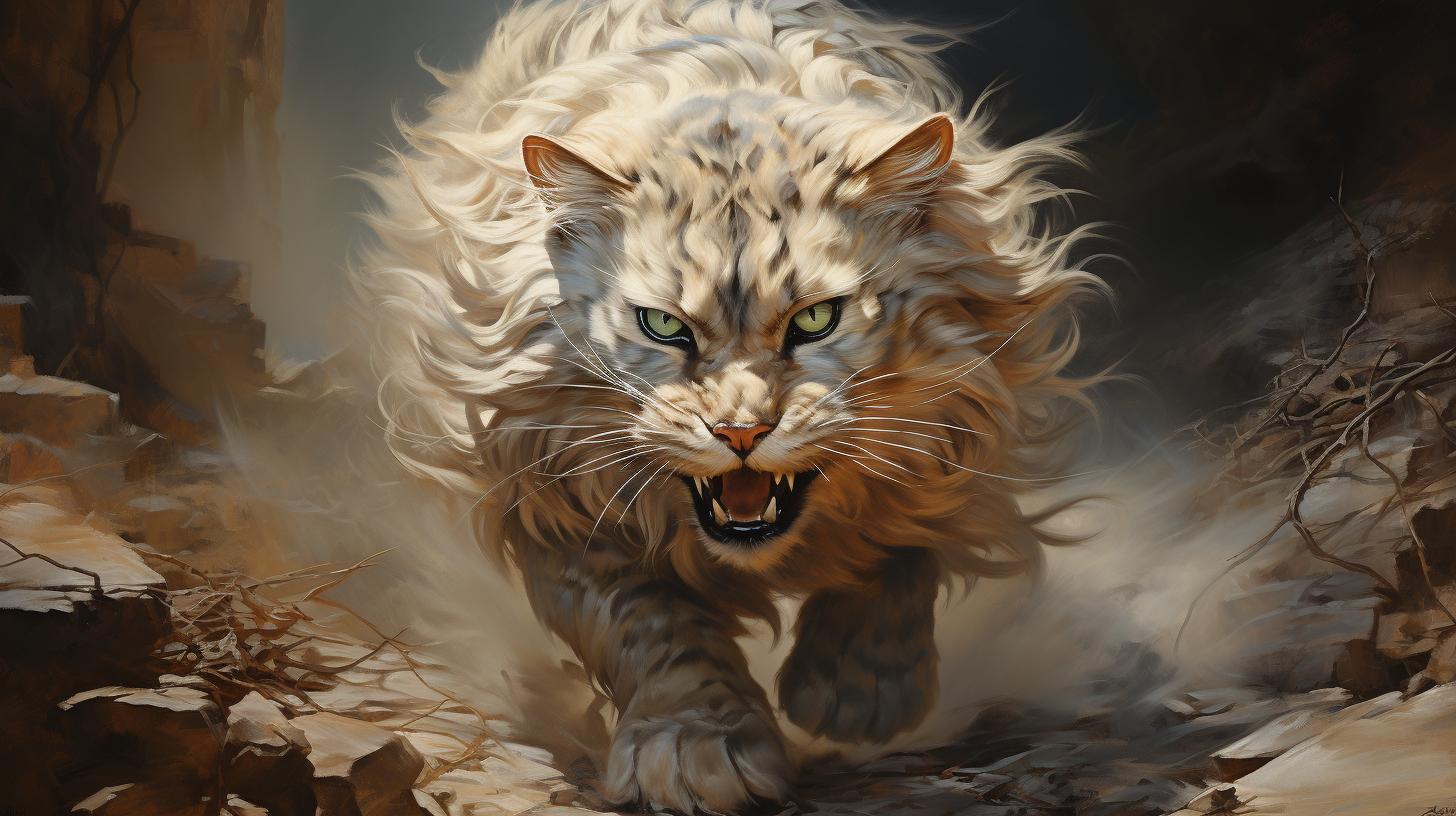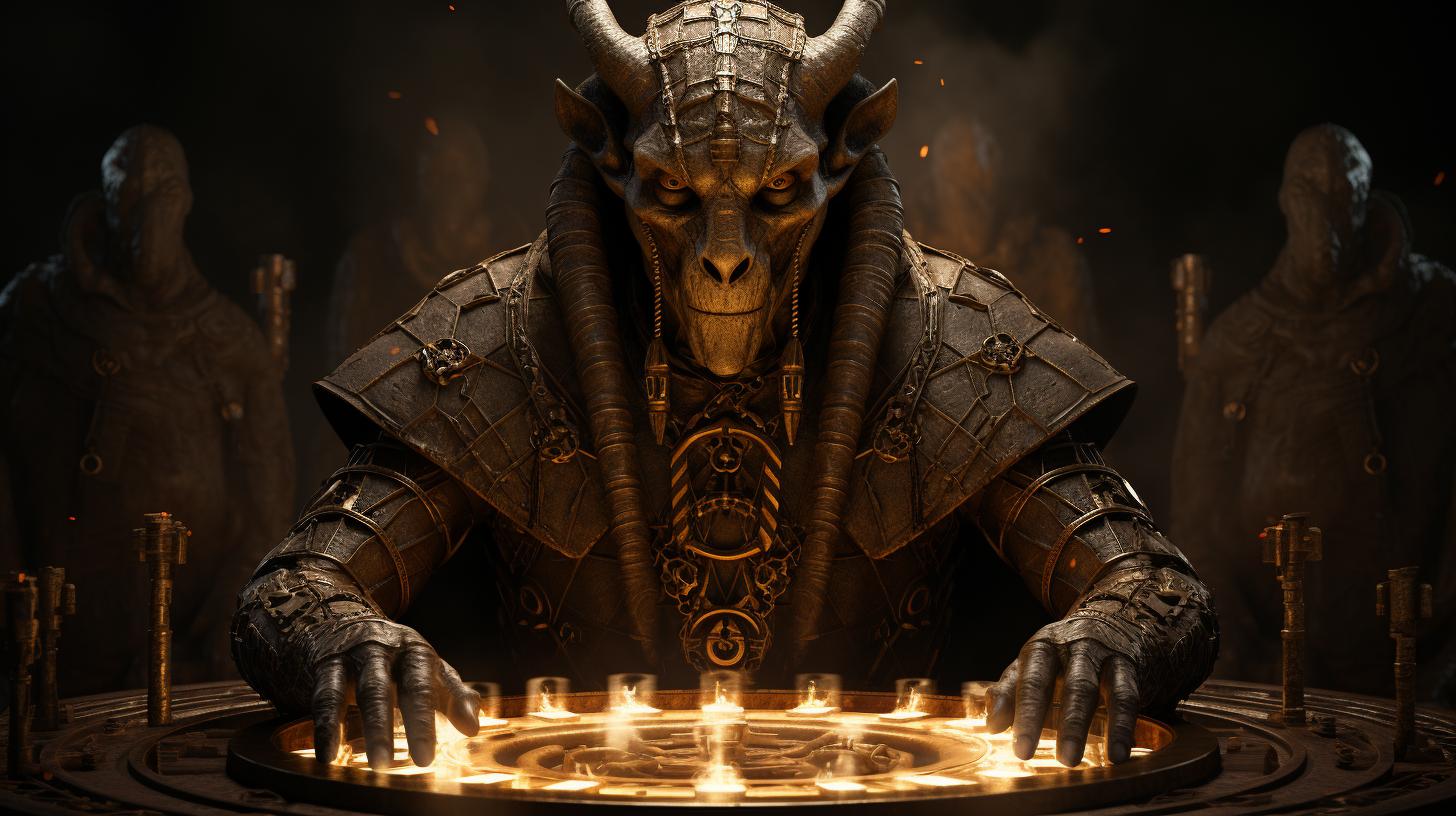Tatenen: The Egyptian God of Creation and Nature

The Egyptian god Tatenen played a significant role in ancient Egyptian mythology. Associated with creation and nature, Tatenen was closely linked to the god Ptah and symbolized the primordial mound.
Depicted with human features and distinctive headgear, Tatenen’s representation emphasized their connection to the earth and vegetation. References to Tatenen can be found in ancient texts, particularly in relation to creation myths and funerary rituals.
Their influence extended to agriculture and fertility, making Tatenen an important deity in the Egyptian pantheon.
Overview of Egyptian Religion
Egyptian religion, in ancient times, was a complex system of beliefs and practices centered around the interaction of the Egyptians with numerous deities said to be present and in control of the world.
It reflected a polytheistic worldview and evolved over time as certain gods and goddesses gained or lost prominence. The religion held significant influence on both ancient and modern cultures.
Ancient Egyptian Beliefs and Practices
Ancient Egyptians believed in the existence of an afterlife and placed great emphasis on proper burial rituals, mummification, and the preservation of the physical body.
They believed that the soul, known as the ka, continued to exist after death and required the body to be preserved for a successful journey to the afterlife. Egyptians also believed in the concept of ma’at, representing cosmic balance and harmony, which influenced their moral and ethical codes.
Evolution of Egyptian Gods and Goddesses
The pantheon of Egyptian gods and goddesses underwent changes throughout history, with deities rising and falling in importance. Over time, certain gods became associated with specific domains, such as the sun god Ra, the afterlife deity Osiris, and the fertility goddess Isis. The Egyptian religion also incorporated syncretism, combining different gods and goddesses into composite forms to emphasize their interconnectedness and to adapt to cultural shifts.
Role of Tatenen in Egyptian Mythology
Tatenen held a significant role in Egyptian mythology as the god of creation and nature. Associated with the primordial mound, Tatenen symbolized the earth’s emergence and was considered a powerful force in the natural world.
Tatenen’s gender fluidity, simultaneously embodying masculinity and femininity, reflected the duality and balance inherent in Egyptian religious beliefs. They were closely linked with Ptah, the creator god, and considered the progenitor of all other deities.
Tatenen: The God of Creation and Nature
The deity known as Tatenen holds a significant role in Egyptian mythology as the god of creation and nature. This section explores the origins and associations of Tatenen, delves into the depictions and symbolism associated with this deity, and examines Tatenen’s relationships with Ptah and other prominent deities.
Origins and Associations of Tatenen
Tatenen’s origins can be traced back to the earliest creation myths of ancient Egypt. This god is closely associated with the primordial mound, believed to be the initial landmass emerging from the chaos of the watery abyss.
As such, Tatenen represented the foundation upon which life and civilization were built.
Associated with fertility and abundance, Tatenen is often depicted with characteristics of both genders, symbolizing their connection to the creation and nurturing of life.
The presence of Ptah-Tatenen, a combination of Tatenen and the creator god Ptah, further strengthens Tatenen’s association with the origin of all living beings.
Depictions and Symbolism of Tatenen
The images of Tatenen often portray a human figure adorned with a twisted ram’s horn or two tall ostrich feathers, encircled by sun disks, atop their head. These representations highlight Tatenen’s connection to the earthly realm and their significance in nature’s cycles.
Additionally, Tatenen is often depicted with green-painted skin, symbolizing their association with the Earth and its abundant vegetation.
Tatenen’s Relationship with Ptah and Other Deities
Tatenen shares a close relationship with Ptah, regarded as the father of all gods in Egyptian mythology. Ptah-Tatenen signifies the divine union between the primordial mound and cosmic craftsmanship. As Ptah-Tatenen, these deities merge their creative powers, solidifying Tatenen’s role as an essential participant in the process of divine creation.
Besides Ptah, Tatenen’s connections extend to various other deities within the Egyptian pantheon. Their involvement with prominent gods and goddesses further highlights Tatenen’s significance as a divine force responsible for shaping the natural world and influencing the course of life’s unfolding.
In conclusion, Tatenen, the god of creation and nature, holds a significant position within the ancient Egyptian mythology. Their origins in the creation myths, depictions symbolizing their association with the Earth and vegetation, and relationships with Ptah and other deities all contribute to the profound impact Tatenen had on ancient Egyptian culture and belief systems.
Tatenen in Ancient Texts and Mythology
Exploring the rich tapestry of ancient Egyptian mythology, the presence of Tatenen can be traced through various texts and myths. This section delves into the references to Tatenen in pyramid texts, their role in creation myths, and their significance in funerary rituals.
References to Tatenen in Pyramid Texts
The pyramid texts, a collection of ancient Egyptian funerary texts, provide glimpses into the beliefs and rituals surrounding Tatenen. These texts often depict Tatenen as a vital force in the afterlife, ensuring the deceased’s journey to the underworld and their eventual rebirth.
References to Tatenen in pyramid texts emphasize their connection to creation and their protective role in the netherworld.
Tatenen’s Role in Creation Myths
Within the realms of creation myths, Tatenen assumes a prominent position as a deity associated with the origin and formation of the world. Often linked to the primordial mound, Tatenen is believed to have played a crucial role in the emergence of life and the establishment of cosmic order.
These creation myths highlight Tatenen’s creative power and underscore their connection to the natural world.
Tatenen’s Significance in Funerary Rituals
Funerary rituals held great importance in ancient Egyptian society, and Tatenen featured prominently in these ceremonies. Their association with creation and their role as a protector made them a vital presence during the funerary process, ensuring a smooth transition for the deceased into the afterlife.
Tatenen’s significance in these rituals highlights the belief in their ability to guide and safeguard the souls of the departed.
Tatenen’s Connection to Earth and Natural Resources
Tatenen, the ancient Egyptian deity, holds a significant connection to the earth and its natural resources. The god’s role as the protector of the primordial mound highlights their association with the very foundation of the land.
Let’s delve into the various aspects of Tatenen’s connection to earth and its resources.
Tatenen as the God of the Primordial Mound
According to ancient Egyptian beliefs, Tatenen represented the primeval mound, which emerged from the chaotic waters of Nun during the creation of the world. This primordial mound symbolized the beginning of the earth’s existence and served as the basis for all landmasses.
Tatenen’s manifestation as the god of the primordial mound emphasized their role in shaping and sustaining the physical world.
Tatenen’s Influence on Agriculture and Fertility
The connection between Tatenen and the earth extended to agriculture and fertility. As the god associated with the land’s abundance, Tatenen played a crucial role in ensuring successful harvests and promoting agricultural prosperity.
People believed that honoring Tatenen would bring fertility to the soil, guaranteeing bountiful crops and sustaining their communities.
Moreover, Tatenen’s influence went beyond food production. The deity was also revered for their connection to overall fertility, believed to aid in the conception and growth of both humans and animals.
This association highlighted the god’s integral role in the continuation of life.
Worship and Offerings to Tatenen for Earthly Blessings
To seek the blessings of Tatenen for earthly abundance, the ancient Egyptians performed rituals and offered various types of sacrifices. Farmers, in particular, would make offerings, including crops, grains, and livestock, to express gratitude and seek Tatenen’s favor for fertile soil and successful harvests.
During these rituals, prayers and hymns were recited, praising Tatenen’s power over the earth and its resources. The act of worship aimed to establish a harmonious relationship with the deity and ensure the prosperity of the land and its inhabitants.
- Tatenen’s association with the primordial mound
- Influence on agriculture and fertility
- Worship and offerings for earthly blessings
This strong connection between Tatenen and the earth illustrates the profound significance of the deity in ancient Egyptian belief systems, where the balance between human life and nature was highly valued and nurtured.
Tatenen in the Ancient Egyptian Pantheon
Tatenen, the Egyptian god associated with creation and nature, held a unique position within the ancient Egyptian pantheon. This section explores Tatenen’s relationship with other gods and goddesses, their worship and festivals in ancient Egypt, as well as their lasting legacy and influence on Egyptian culture.
Tatenen’s Relationship with Other Gods and Goddesses
Tatenen had significant connections with various deities in Egyptian mythology. One notable association was with Ptah, as Ptah-Tatenen, who was considered the creator of all gods and the universe itself. This synthesis of Tatenen and Ptah represented the creative and reproductive powers of the earth and the divine origin of all life.
Furthermore, Tatenen’s association with other earth-related deities such as Geb, Nut, and Osiris further emphasized their role in the cosmic order.
Tatenen’s Worship and Festivals in Ancient Egypt
Devotion to Tatenen was evident in ancient Egyptian religious practices.
Worship of Tatenen encompassed both public and private rituals, often performed in temples dedicated to the deity. Ceremonies included offerings, prayers, and hymns to acknowledge Tatenen’s role in the creation and preservation of the natural world.
Festivals celebrating Tatenen provided opportunities for communities to come together in joyous commemoration, reinforcing their connection with the divine forces of creation.
Popular Festivals:
- Opet Festival: This annual religious festival in Thebes celebrated the rejuvenation of the god Amun, and Tatenen played a significant role in the processions.
- Neheb Kau: This event, held in Memphis, involved rituals to honor Tatenen’s association with fertility and the abundance of the earth’s resources.
Tatenen’s Legacy and Influence in Egyptian Culture
Tatenen’s influence extended beyond religious practices and festivals.
They played a vital role in shaping the Egyptian worldview, especially regarding their connection to the earth and the cycle of life. Tatenen’s embodiment of the natural world and their significance as a creator deity left a lasting impression on Egyptian art, architecture, and symbolism.
The god’s association with fertility and agricultural prosperity promoted the importance of nurturing the land and its resources, contributing to the sustainable practices adopted by ancient Egyptian civilization.
Furthermore, Tatenen’s role as the primordial mound and their connections to other deities solidified their status as a fundamental force in the Egyptian pantheon.
Their enduring presence in religious texts and iconography attests to the lasting impact Tatenen had on the spiritual and cultural fabric of ancient Egypt.
.




















